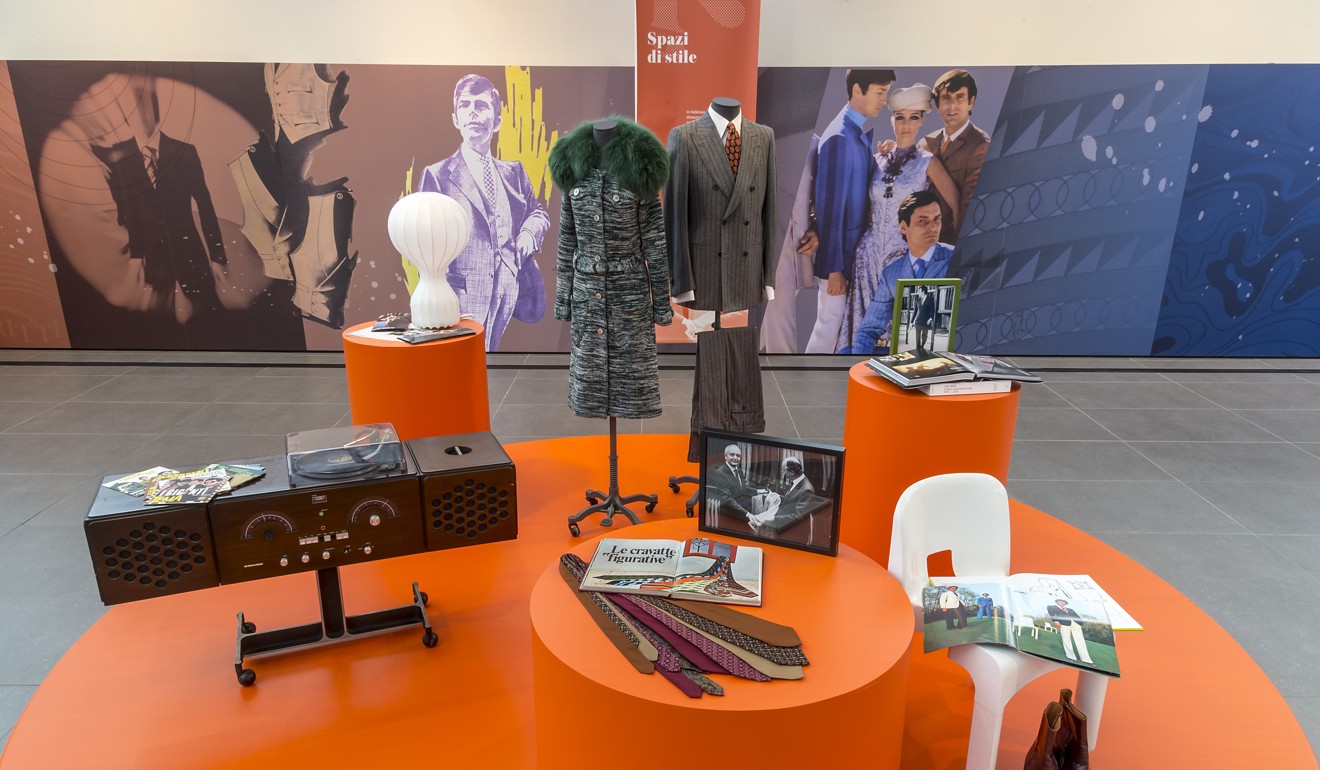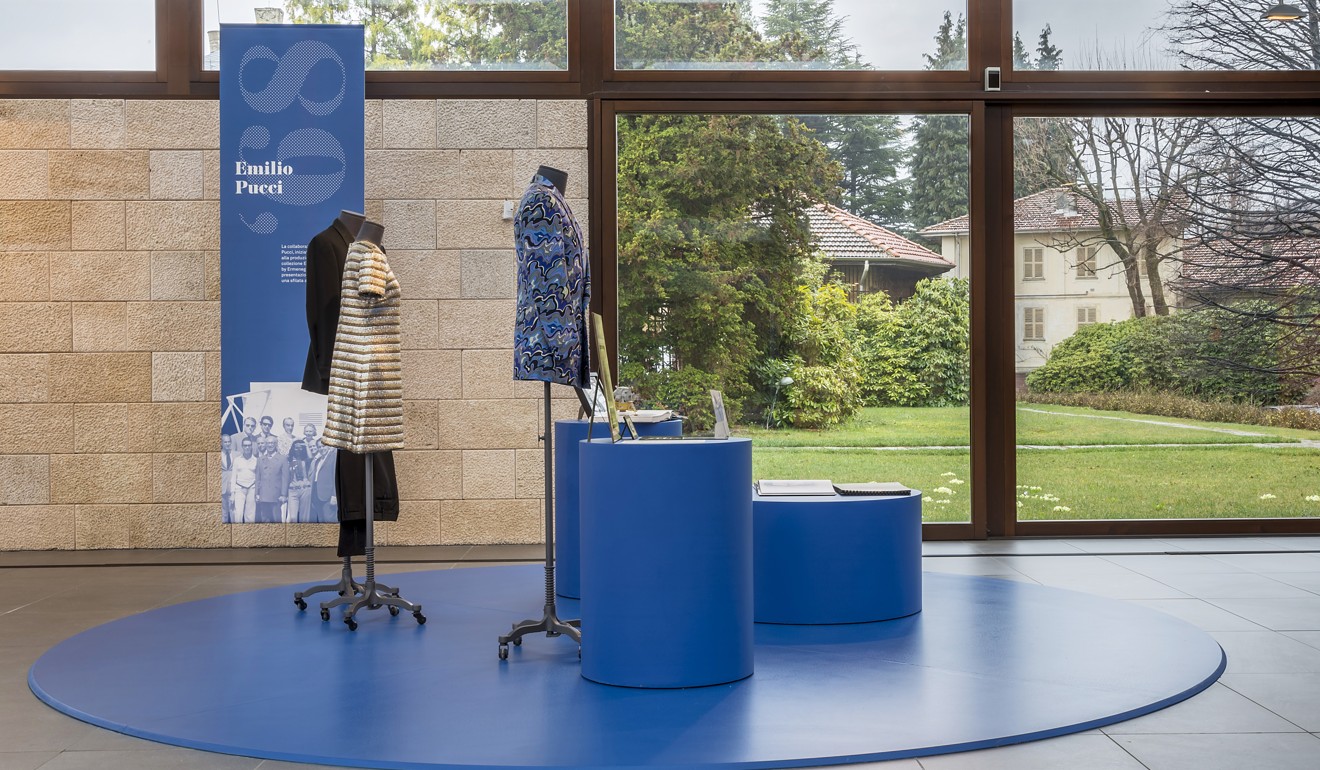
Storied Italian menswear house offers VIPs heritage experience at its base in Alpine foothills
With more than a century of history to milk, Ermenegildo Zegna educates and impresses top clients from Asia and beyond by sharing its heritage and culture at woollen mill, museum and hotel in northern Italy
As fashion brands try to figure out successful digital marketing strategies to entice ever more fickle luxury consumers, one thing has become clear: experiences still matter. This explains the proliferation of exhibitions by luxury labels to add an element of storytelling to their marketing efforts.
Ermenegildo Zegna – Conosci te stesso: come to know yourself through beautiful self-expression
Menswear powerhouse Ermenegildo Zegna is one of the many labels that in recent years have shaken up their communication efforts. In the case of Zegna, “Fifty per cent of our communication is now digital and on social media”, says company CEO and family scion Gildo Zegna, who spoke to the Post a few weeks before the opening of an exhibition at the firm’s woollen mill in northern Italy.
The brand, however, still believes in offering its clients a full immersion in its history, which can only be achieved through a personal relationship.

“We have this special place, the Oasi Zegna, where we were born and where our DNA comes from,” explains Zegna, referring to the place at the foot of the Italian Alps, a short drive from Milan, where the company began.
“We invite our top clients there so they can see where we come from and what we still do. We also have a museum, Casa Zegna, and all these initiatives are part of our heritage. The Chinese now, like the Japanese in the past, want to know more about the heritage of the company and understand if a brand is authentic or not, and social media has also helped spread the message.”

Located in Trivero, a small town in the Piedmont region of Italy, the Zegna woollen mill is indeed an idyllic place, which the company uses to showcase its culture to VIP customers from around the world. Besides Casa Zegna, the aforementioned small museum that houses a permanent collection and is home to temporary exhibitions, the company also owns a small hotel, Bucaneve, nearby, a place familiar to many of the label’s top clients, who get to stay there when visiting the mill.
This month, Uomini All’Italiana 1968, a small exhibition charting the rise of the brand’s ready-to-wear division, opens at Casa Zegna. Focusing on the decade between 1968 and 1978, the show narrates how the house transformed from a maker and supplier of high-end fabrics to a design-led brand offering ready-to-wear collections.

While the exhibition offers an insight into the origins of the Ermenegildo Zegna that we know today, it’s unlikely that many fashion aficionados will make the pilgrimage to Trivero to see it. But that is not the point – the show also serves as a pretext to bring some of the brand’s most loyal customers, many of them hailing from Hong Kong and China, to the Oasi Zegna and have them experience first-hand what Zegna is about.
The secret to fashionable Japanese men’s sense of style: meet five of the trendsetting gents on Tokyo’s streets
Anna Zegna, Gildo’s sister and president of the Zegna Foundation, is the brains behind the exhibition. She explains how privileged the company is to have such a beautiful space to show to the public and its clientele, something that has become a rarity in Italy, where “a lot of Italian brands are not Italian any longer – and I don’t mean to be nationalistic but it’s hard to cultivate a culture of manufacturing, which is what we excel at.
“We don’t have diamonds or oil under our feet but savoir faire and culture. We have so many stories to tell and so many facets to our history and so many angles, so this exhibition is just a prologue.”

While she won’t confirm whether the show will travel abroad, Zegna says that the company will definitely invite some of its Asian customers to discover it.
“Trivero is the beginning of the story, not only for our clients, but also for all the Zegna teams from around the world. They are trained here and when clients come to attend our shows in Milan we bring them here,” she says.

“When they visit, they’re always fascinated because they get to understand what’s behind the products and are impressed by a family company with more than 100 years of history when in Asia traditions are often forgotten, but here they find our roots and also the contemporary element that is alive. They love to see how in this place we constantly push the envelope with innovation and new things.”
Meet the family behind Ermenegildo Zegna
The visits entail much more than just guided tours of the museum and the grounds of the Oasi Zegna. In its key markets, the company has so-called Zegna Ambassadors, who act as a sort of concierge and help arrange immersive experiences.
After attending the fashion show in Milan, a VIP client from China, for instance, gets to visit special places in the city, be it Leonardo da Vinci’s mural The Last Supper outside opening hours or an exhibition in an off-the-beaten-track location, to fully experience “not just Zegna but Italian culture, a slice of Italy and the spirit of the brand and the family”, in the words of Anna Zegna. She adds that, contrary to what one may think, a lot of its top Asian clients are actually very young.

“It’s the second generation. We opened our first shop in Beijing in 1991 and those clients who know us since then are now adults, so their children have very different lifestyles and tastes, more casual,” she says.
“Their parents were the first to start building business relationships with the West and opted for Western suits instead of Mao jackets, but the new generation is more into leisure wear, like to drive sports cars, go on holidays, often travel private, so their lifestyle is very Westernised and most of them are millennials and want something a bit trendier compared to their parents.”

In spite of their different tastes, they still love the authenticity of a hearty meal at Bucaneve or a hike around the hills surrounding Casa Zegna, perks that no social-media campaign, no matter how successful, can offer.
Why Shanghai beckons for Hong Kong fashion designer, winner of Woolmark Asia prize
It obviously helps that most of the customers end their immersive journey with a high-priced souvenir from the label’s swanky Milan boutique (often a made-to-measure suit in one of Zegna’s ultra-luxurious fabrics such as vicuna), but it’s nevertheless clear that, as brands left and right grapple with the online revolution sweeping the industry, finding the right balance between digital and real-life experiences is the way to go.

